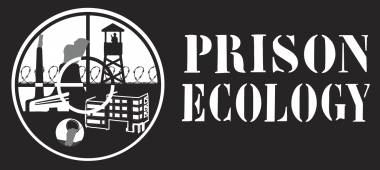
The Prison Ecology Project addresses issues such as: damage of sewage and industrial waste from overpopulated and under-regulated prisons into to water ways; threats to listed species by the ongoing construction and operation of prisons in remote, environmentally-sensitive rural areas; and environmental justice concerns regarding prisoners, staff and surrounding communities.
Check out our partners at The Campaign to Fight Toxic Prisons
The vast prison population in the US has become, in many respects, a nation unto itself. Incarcerated people, formerly-incarcerated people and their families share a common experience that is akin to being part of a cultural diaspora with communities spread across the country in detention facilities. That reality doesn’t just impact the people involved, but also has significant ecological effects. The environments surrounding prison and jail facilities share common, unique characteristics—what we are calling prison ecology.
PEP and FTP offer a unique opportunity to go on the offensive against the prison industry’s long history of serious water pollution and ecological degradation occurring, literally, behind closed doors.
While the environmental impacts of mass incarceration are massive, the social implications are also impossible to ignore. There are well-over 2 million people in US prisons, as well as countless family members and friends who feel the impacts of dysfunctional incarceration policies. These policies have left one out of 28 kids with a parent locked up—in keeping up with the times, Sesame Street now has a character whose parent is incarcerated.
Most people whose lives have been impacted by the criminal justice system have not have engaged with the environmental movement up to the present time. The PEP creates an entryway for them, as we are able to illustrate that the environmental toll of building and operating prisons indicates yet another reason to massively reduce the nation’s prison populations and send people back to their families.
Thus, an additional result of the project: the growth of the environmental movement.
PEP Steering Committee: Fifteen people comprise the current decision-making body, representing a broad range of experiences and backgrounds, as well as geographic dispersal, to ensure effective organizing on a national level.
———————————————–
The Prison Ecology Project is a program of the Human Rights Defense Center.
You can reach us by phone 561-229-5221
Email: ptsolkas@prisonlegalnews.org
Mail: Prison Ecology Project, PO Box 1151, Lake Worth, FL 33460